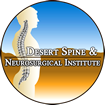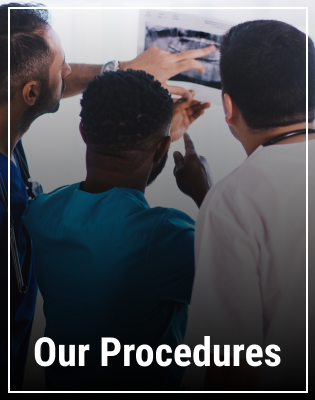It was a lIttle more than a year ago that John Fletcher, a transportation security administration (TSA) screener at the Palm Springs International Airport noticed something unusual.
“I had this ache in my back,” remembers Fletcher. “I thought I had pulled some muscles. Then one day, I was coming out of the shower and toweling off and I had no strength in my right arm. I couldn’t pull it up.”
Fletcher made an appointment with his primary care physician to find out what was wrong. His initial course of treatment was pain management therapy which included steroid injections. “I wasn’t really feeling pain,” explains Fletcher. “It was more like weakness in my arm, and I was rapidly losing strength.”
Frustrated, Fletcher lived with his situation for the better part of a year, adapting as best he could. “I was a dual-certified officer with TSA at the time, so I worked check point and baggage screening,” says Fletcher. “The problem didn’t impair my job, but at times it became difficult to lift baggage.” After months of therapy, an X ray and magnetic resonance imaging (MRI) — which revealed degenerative disc disease — it was determined that surgery was Fletcher’s best option.
Fletcher was referred to Eisenhower Neurosurgeon Shahin Etebar, MD, Medical Director, Eisenhower Neuroscience
Institute. “When I reviewed John’s case, he had significant narrowness of the spinal canal at levels C4-5, C5-6 and C6-7 due to degeneration of the discs and bone spur formation,” says Dr. Etebar. “The combination of the two was causing impingement of the spinal cord and the spinal nerves.” Dr. Etebar chose to perform an anterior cervical discectomy fusion on Fletcher. “This operation is one of the most successful that we do in spine surgery,” explains Dr. Etebar. “The outcomes are usually excellent with full resolution of pain and weakness for the patient. The most common response I get from patients after the surgery is that the procedure wasn’t very painful, they’re feeling much better and they should have done this much sooner.”
Confident in Dr. Etebar’s expertise and comfortable with his demeanor, Fletcher went in for surgery in May 2013. Usually, in a procedure like Fletcher’s, the degenerated disc or discs are removed through an incision made in the front of the neck. Then, a cervical fusion is performed by using a block of bone to fill the area where the disc had previously been. During the healing process, the bone graft fuses with the vertebrae to form a new bone mass called a fusion.
Following the four-hour surgery, Fletcher spent two days in the hospital before being released. He also spent one month recouping at home. “John recovered very nicely,” says Dr. Etebar. “His strength came back quickly. I prescribed a home exercise regimen for him using light weights, as well as the use of an electronic magnetic bone stimulator to stimulate bone growth and healing, which is particularly advantageous for patients who have had multi-level surgery.” Fletcher returned to work by the end of July.
Fletcher and his partner Donna were so pleased with the care he received that they wrote a letter to Eisenhower detailing the experience. “I’m very happy that the problem has been corrected. Everyone at Eisenhower Neuroscience Institute, especially the members of my surgical team, was just superb from beginning to end.”


